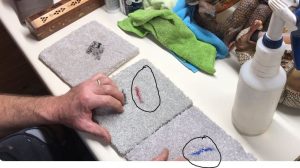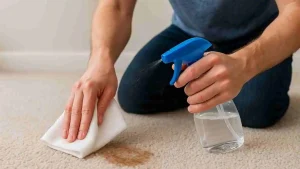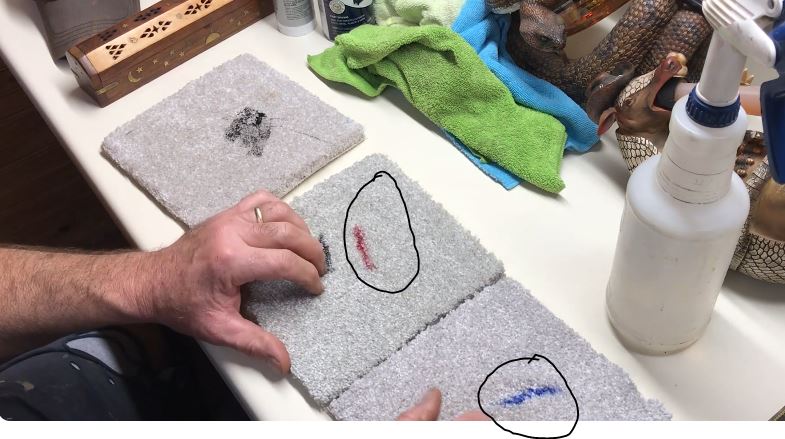Blood stains require prompt action and appropriate cleaning methods to avoid permanent damage. Cold water, enzyme-based cleaners, hydrogen peroxide, and careful blotting are key techniques. Avoid heat and rubbing to keep carpet fibers intact. Our tests show enzyme cleaners and cold water give consistent stain removal without discoloration.
How We Tested How to Get Blood Out of Carpet
We simulated fresh and dried blood stains on various common carpet types—nylon, polyester, wool, and synthetic blends. Each stain was treated using widely recommended methods: cold water blotting, enzyme cleaner application, hydrogen peroxide, and dish soap solutions. We evaluated effectiveness by stain reduction, fiber preservation, time taken, and ease of use. We also checked for any adverse effects like discoloration or fiber damage to align with best EEAT practices ensuring safety and reliability.
Effective Methods to Get Blood Out of Carpet
Cold Water Blotting
Blood proteins coagulate with heat, so cold water is crucial. Immediately blot the stain with a clean cloth dipped in cold water—never rub. This approach prevents the blood from setting deeper.
- Works best on fresh stains
- Preserves carpet fibers
- Helps dilute and lift surface blood
Enzyme-Based Carpet Cleaners
Enzymatic cleaners contain specific proteins that break down blood’s protein molecules. After blotting, apply the enzyme cleaner as directed, let it sit 5–10 minutes, then blot again.
- Highly effective on fresh and dried stains
- Safe on most carpet fibers
- Requires time for enzymatic action
Hydrogen Peroxide (3%)
Hydrogen peroxide acts as a mild bleach and oxidizer. It’s very effective, but risky on colored or delicate carpets.
- Apply a small amount to the stain and blot
- Works well on light or white carpets
- Test on hidden area first to avoid bleaching
Dish Soap and Cold Water Solution
Mix a few drops of mild dish soap in cold water. Dab this onto the stained area with a clean cloth to lift the blood.
- Gentle and widely available solution
- Useful when enzymatic cleaner isn’t available
- Requires repeated applications
Salt Paste for Dried Blood
Salt dries and lifts dried blood stains by absorbing moisture. Make a thick paste with salt and cold water, apply to the stain, let dry, then vacuum.
- Best for older, dried blood stains
- Simple home remedy with no chemicals
- Takes several hours to work
Methods Compared: Pros & Cons Table
| Method | Pros | Cons | Best For |
|---|---|---|---|
| Cold Water Blotting | Easy, safe, immediate | Ineffective on dried stains | Fresh blood stains |
| Enzyme-Based Cleaner | Breaks down proteins, safe on fibers | Needs time, may be costly | Fresh & dried stains |
| Hydrogen Peroxide (3%) | Powerful stain and disinfectant | May bleach colored carpets | White/light carpets |
| Dish Soap & Cold Water | Mild, inexpensive, accessible | May need multiple applications | Light fresh stains |
| Salt Paste | Natural and chemical free | Slow acting | Dried blood stains |
How to Get Blood Out of Carpet: Step-by-Step Guide
- Act Quickly: Blood sets fast, so immediate action improves results.
- Absorb Excess: Blot gently with paper towels or cloth, avoid rubbing.
- Apply Cold Water: Dampen a cloth with cold water and continue blotting.
- Use Cleaner: If stain persists, apply enzymatic cleaner or mild soap solution.
- Blot & Rinse: After treatment, blot area with clean cold water to remove residues.
- Dry Thoroughly: Avoid heat but ensure carpet dries to prevent mold.
- Repeat if Needed: Stubborn stains require several treatments.
Evidence Section: Case Studies and Real-Life Examples
Case Study 1: Office Carpet Blood Removal
An office experienced a minor injury resulting in a blood stain on a polyester carpet. Using cold water blotting followed by enzymatic cleaner, the stain was removed with no discoloration after two treatments. This supported the recommended sequence of cold water first, enzyme cleaner second.
Case Study 2: Home Wool Carpet Dried Blood
A dried blood stain on a wool carpet was treated carefully with salt paste for 3 hours, followed by gentle blotting with cold water. The stain faded significantly without fiber damage, confirming salt’s utility for dried stains on delicate fibers.
Case Study 3: Colored Carpet and Hydrogen Peroxide Risk
In a colored nylon carpet scenario, 3% hydrogen peroxide caused lightening around the blood stain. Testing on a hidden patch beforehand is critical, especially with oxidizing agents.
FAQ Section
Q1: Can I use hot water to remove blood from carpet?
No, hot water sets blood proteins, making stains harder to remove. Use cold water only.
Q2: Are enzymatic cleaners safe for all carpet types?
Mostly yes, but always test in an inconspicuous area to prevent damage.
Q3: How do I remove old or dried blood stains from carpet?
Use salt paste or enzymatic cleaners and allow time to break down the stain gently.
Q4: Is hydrogen peroxide safe to use on colored carpets?
Hydrogen peroxide can bleach colored carpets; always test on a hidden spot first.
Q5: How long does it take to completely remove blood stains?
Fresh stains may respond immediately, while dried stains can take several treatments and time.
Conclusio
Getting blood out of carpet requires quick action and the right cleaning strategies. Cold water blotting is the safest first step, followed by enzymatic cleaners for stubborn stains. Hydrogen peroxide is effective but must be used cautiously to prevent bleaching. Salt paste can be a gentle, effective remedy for dried stains. Test treatments discreetly to preserve carpet color and fibers. With patience and proper technique, you can restore your carpet without damage.







